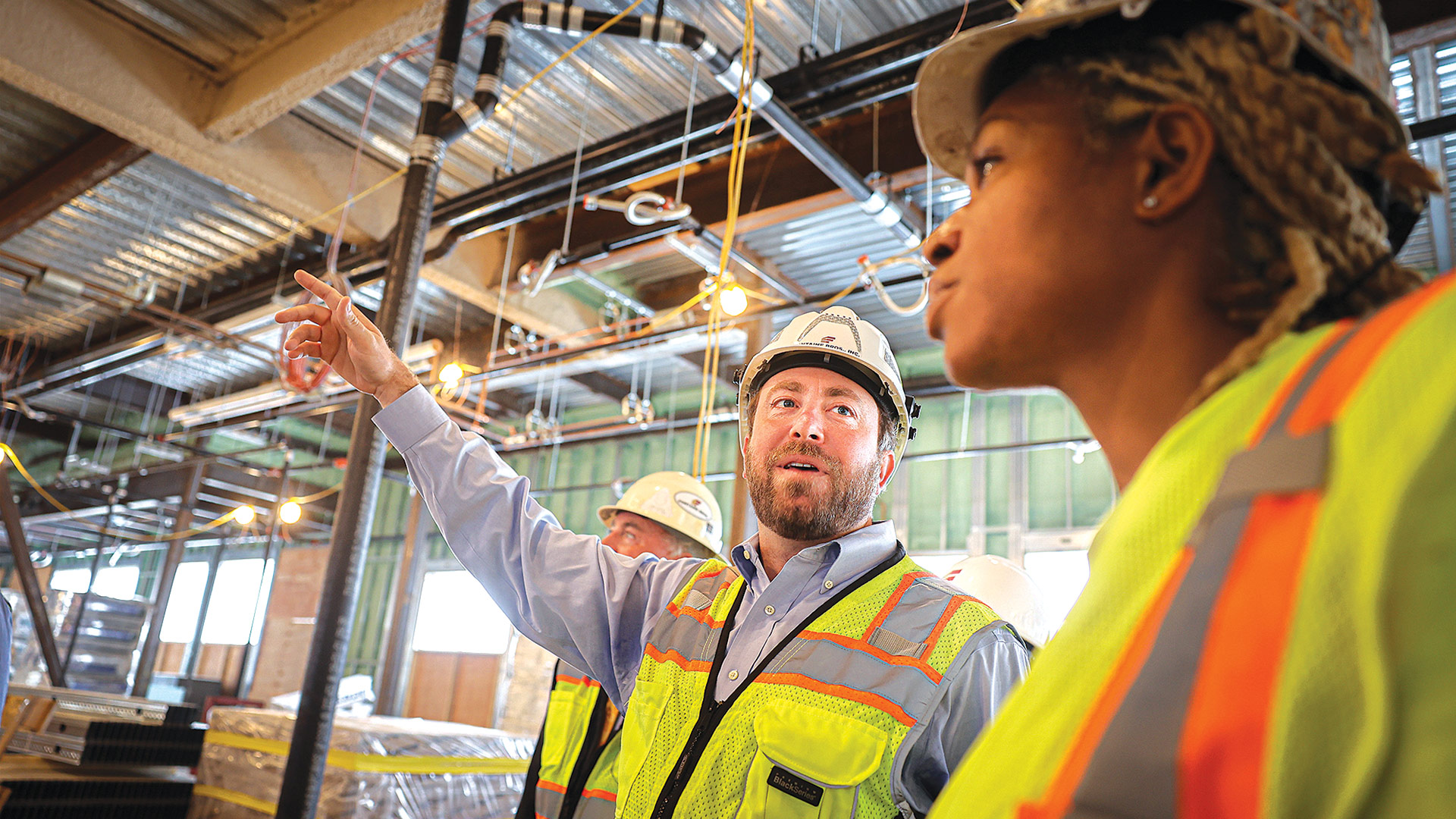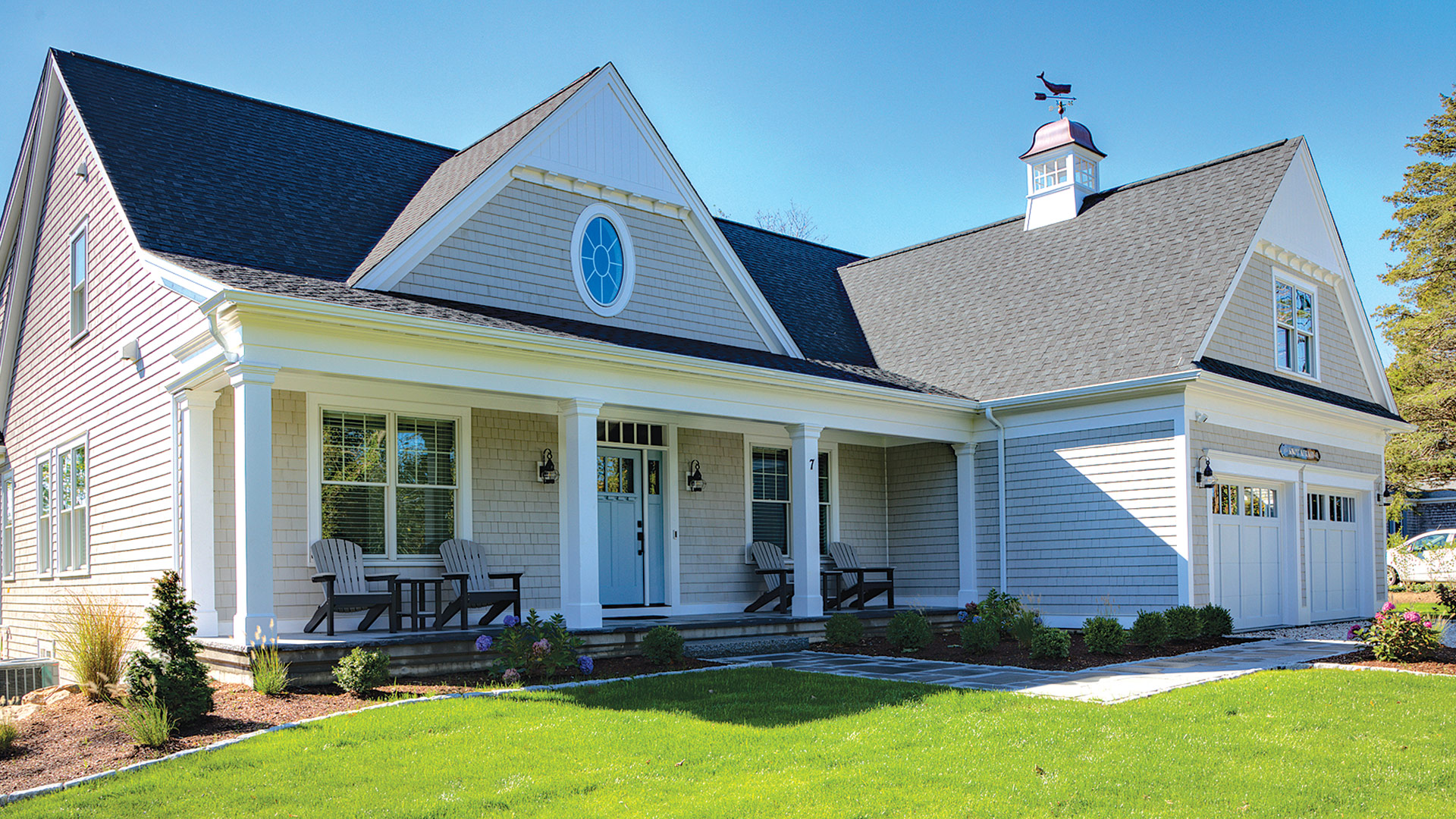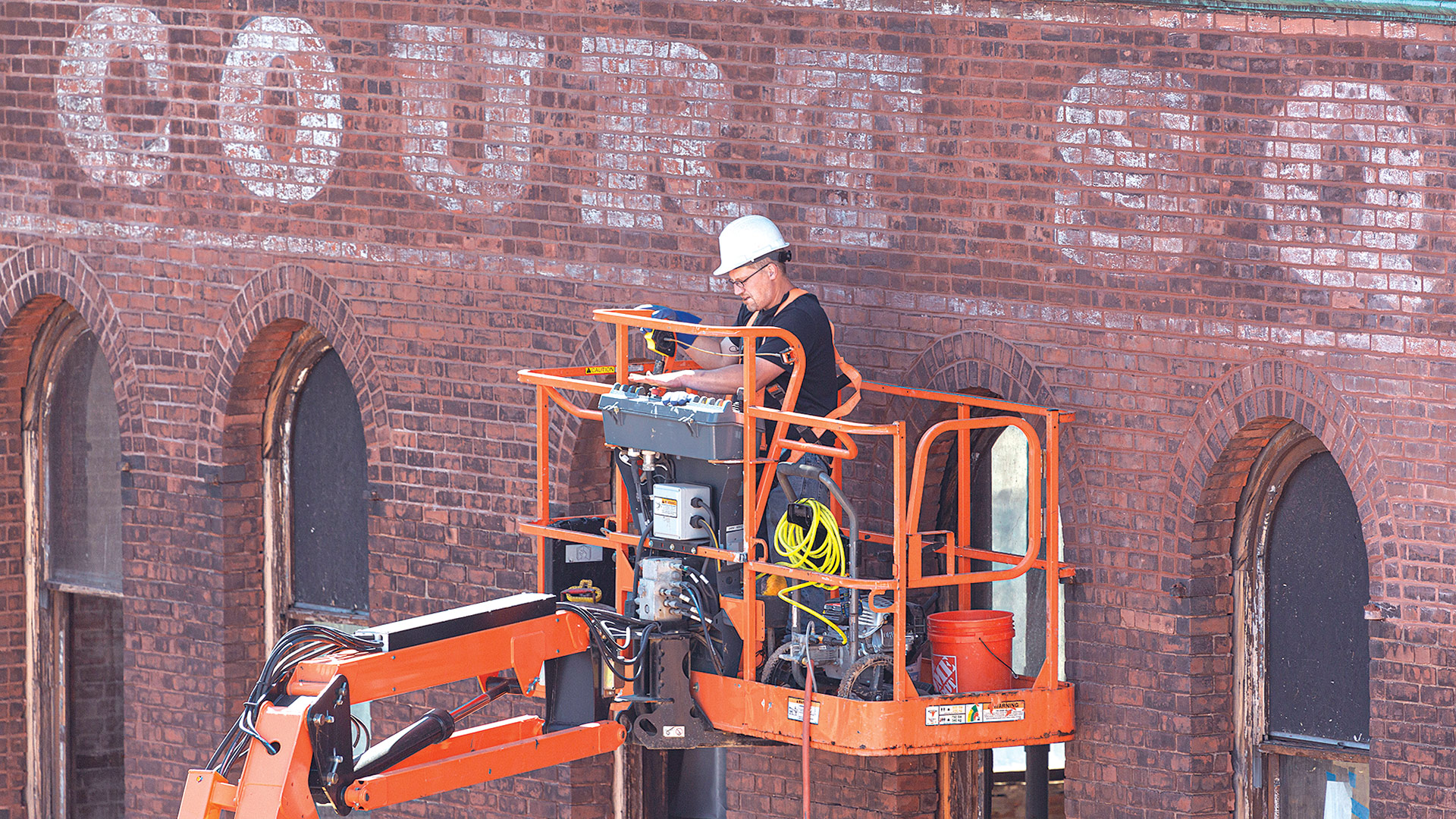Waiting for a Correction

Dave Fontaine Jr. says a ‘correction’ on cost and supply challenges would help builders and buyers move forward on projects with confidence.
Photo by Joe Santa Maria, Kill the Ball Media
Dave Fontaine Jr. hears talk of a recession that could affect the construction industry, but he prefers to use a different word: correction. After a couple years of soaring costs, he feels one is necessary, and coming.
“I think in the last two years, costs have risen over 20% each year. When you go back over the last 30 years, the average increase per year is 2% to 4%,” said Fontaine, CEO of Fontaine Brothers Inc. in Springfield. “It’s been very difficult for projects to absorb, and for clients to absorb. We’ve seen several projects — some we’ve been involved in, some we’ve watched from the outside — that have either stalled or been canceled because of cost challenges.
“We’re hopefully undergoing a correction. And I like to use that word, the idea being that we need to get back to a correct place. Sometimes [rising costs] are a necessary evil: things get overheated; COVID brought challenges with supply chains, labor, and transport that affected materials and pricing. But I think, frankly, construction costs are in need of a correction. When that happens organically, when we’re able to broaden the supply chain again, get things flowing … we’ll get back to a place where people know what the cost is to build, and move forward with confidence.”
That said, Fontaine noted, “it’s been a really good year; we’ve been busy across all the geographies we serve and all the different sectors as well.”
Bill Laplante, president of Laplante Construction Inc. in East Longmeadow, which specializes in home building and remodeling, had an equally strong report.
“The demand carried over from 2021; demand for remodeling was really high, and a lot of that was just people being home during the pandemic. They were able to work from home and wanted to make a nice office or put a bedroom suite in.”
“We had a fantastic 2022. It was probably one of our best years in the last 20 years,” he said, noting that some of that success was driven by expansion onto Cape Cod, but some was based on demand that carried over from 2021. “Some of it was pandemic-related, but we actually have a really strong outlook for 2023 with the jobs we have in the pipeline.”
He agreed, though, that supply and cost challenges have been discouraging.
“Some materials, things like plastic pipe and conduit, have increased five times the cost. It’s not as simple as a 8% or 9% increase here and there; for some materials, it’s completely off the charts. It makes it difficult to sign a contract and build a house, when you’re not going to be purchasing those materials for four months, not knowing where things are truly going to land. Obviously, once costs go up, you try to plan for the next house.
“The supply-chain issues have been brutal over the last couple years,” he went on. “It seems like it’s something different every week. You can’t get the plastic for the buckets for drywall cement. Then the next week, you can’t get runners for cabinet drawers. The next week, you can’t get a hinge. That’s been very, very difficult. Plus, a lot more planning goes into it, with the increased lead times for windows, doors, and appliances. We need to get selections a lot sooner than we would from our customers so we can get orders placed. With high-end appliances, we’re out 10 to 12 months.”
Fontaine echoed those sentiments. “Lead times are still challenging. There are some items getting better, which is good, and most items are not getting worse, which is also good. But we’re still seeing a lot of difficulty with items like electronic components, chips, boards, stuff like that. That’s affecting things like rooftop units, electrical equipment, and generators.

Bill Laplante says demand has been up for new homes and remodels alike, despite rising interest rates.
“For us, it’s not anything that’s stopped our projects from opening on time,” he added, “just something we’ve had to pay much more attention to, and we’ve become more creative with how we procure things and meet our schedules.”
Ups and Downs
Despite reports that some area contractors had a strong 2022, rising interest rates are expected to impact construction nationally in 2022. The 2023 Dodge Construction Outlook predicts U.S. construction starts will drop by 3% next year.
Meanwhile, the Architecture Billings Index, a forward-looking indicator for construction activity, dropped significantly in October after 20 months of positive growth. And the Associated Builders and Contractors backlog indicator, which tracks work construction firms have booked but haven’t yet begun, fell below its pre-pandemic reading from February 2020, largely due to a decline in the commercial and institutional category.
“The construction sector has already started to feel the impact of rising interest rates,” said Richard Branch, chief economist at Dodge. “The Federal Reserve’s ongoing battle with inflation has raised concerns that a recession is imminent in the new year. Regardless of the label, the economy is slated to significantly slow, unemployment will edge higher, and for parts of the construction sector, it will feel like a recession.”
Some sectors are expected to perform well, he added, including data-center construction, manufacturing starts — especially chip-fabrication plants and electric-vehicle battery plants — and publicly funded infrastructure projects. Meanwhile, the office, warehouse, hotel, and retail sectors are expected to lag. Branch also expects single-family starts to drop about 5% next year.
“There’s got to be more emphasis put on job training and vocational schools. The opportunities out there for tradespeople, and what a skilled tradesperson can make, are incredible.”
Laplante said remodeling, additions, renovations, and home improvements comprise 30% to 40% of his firm’s work, and the pandemic played a role there.
“Again, the demand carried over from 2021; demand for remodeling was really high, and a lot of that was just people being home during the pandemic. They were able to work from home and wanted to make a nice office or put a bedroom suite in. We saw that pretty much across the board. People weren’t traveling overseas; they were putting in poolhouses and sunrooms and outdoor kitchens, things like that.”
While he expects interest rates to slow activity in the home-building and remodeling industry, Laplante said the large size of some of his projects, which can take from six months to a year, tends to dampen any slowdown.
“Smaller remodelers are probably seeing more of an effect with interest rates slowing things down quicker than we will see it,” he said. “And then, of course, we’re working with a lot of customers who aren’t interest-rate-sensitive.”
He added that subcontractors may see a slowdown before builders because they don’t deal with the same project duration.
The Cape Cod expansion is a strategic move partly based on the fact that Laplante was already building there, and it’s also a fairly high-end market, where, as he noted, clients are more willing to weather higher interest rates. “So part of that was a hedge against the economy; you don’t see the deep swings in demand you would see in the Western Mass. market.”

A worker from Fontaine Brothers works on the facade of the former Court Square Hotel.
Photo by Joe Santa Maria, Kill the Ball Media
Fontaine said his company, while also expanding its reach geographically, is taking on more housing work now that it’s starting to become a priority again. “We did a lot of it for a long time, and we’re seeing a lot more public housing, affordable housing, make its way back through the funding pipeline.”
His most notable current project in that realm is the ongoing transformation, with Winn Development, of the Court Square Hotel in Springfield into 71 units of market-rate housing, accompanied by retail on the ground floor.
Fontaine’s longtime presence in the education sector is also strong right now, with projects including the new DeBerry-Swan Elementary School in Springfield, an elementary school in Tyngsborough, a middle school in Walpole, a project at UMass Chan Medical School in Worcester, and the $240 million Doherty Memorial High School, the largest project in the city of Worcester’s history.
Help Wanted
After inflation and supply woes, the third challenge construction companies are dealing with remains a workforce crunch, which has affected many other sectors of the economy as well.
“The number of people going into the trades is way, way down,” Laplante said. “There’s got to be more emphasis put on job training and vocational schools. The opportunities out there for tradespeople, and what a skilled tradesperson can make, are incredible.”
To that end, he works directly with area vocational schools to cultivate talent, and often schools that aren’t vocational, per se, but have vocational programs. For example, an intern from Longmeadow High School will come on board soon, and Laplante hired another intern from that school last year.
“Through COVID, we’ve had people who have been borderline on retirement, and COVID pushed them to retire,” Fontaine said of one of the stress points in the construction workforce. “But we honestly haven’t had as significant labor challenges as some of our peers.”
That’s partly due to working with some of the large local unions, which can supply a more reliable workforce, he said. “But we’ve also put a lot of focus the last few years into workforce development, even before COVID. We actively go into the community and work with workforce programs, with community organizations, to bring people into the workforce.”
Those efforts are crucial, he added. “When I look at the next 20 to 30 years, that’s one of the biggest challenges, to be able to recruit people into the trades.”
Fontaine added that his company has been able to integrate a lot of technology into projects over the last few years, which has helped overcome challenges related to cost, lead times, and workforce. “We’re using technology to track lead times and inform other projects, so we avoid those ‘gotcha’ moments, and we’re using technology to coordinate mechanical systems and prefabricate them off-site, which helps with some of that labor and lead-time burden.”
In short, he said, “we’re trying to modernize an industry that’s by nature not modern, to the best extent possible. That’s been a big theme for us the last couple years.”
That said, the main theme across the industry in 2023 could be the impact of those rising interest rates finally coming to roost.
“Our planning process is so long, and the jobs we’re getting ready to start now are jobs that were planned four months ago, and when the financing is finally put together, we’re ready to get shovels in the ground. That’s a house that people ultimately will be moving into in the fall,” Laplante explained. “So, because of that, we see a little more of a lag in the drop in demand based on the interest rates, but it certainly is coming.”
Still, Dodge’s Branch believes any downturn in the construction industry will not be as dire as the Great Recession, which settled over the U.S. almost 15 years ago.
“The funds provided to the construction industry through the Infrastructure Investment and Jobs Act, the CHIPS and Science Act, and the Inflation Reduction Act will counter the downturn, allowing the construction industry to tread water,” he said. “During the Great Recession, there was no place to find solace in construction activity — 2023 will be quite different.”
Joseph Bednar can be reached at [email protected]








